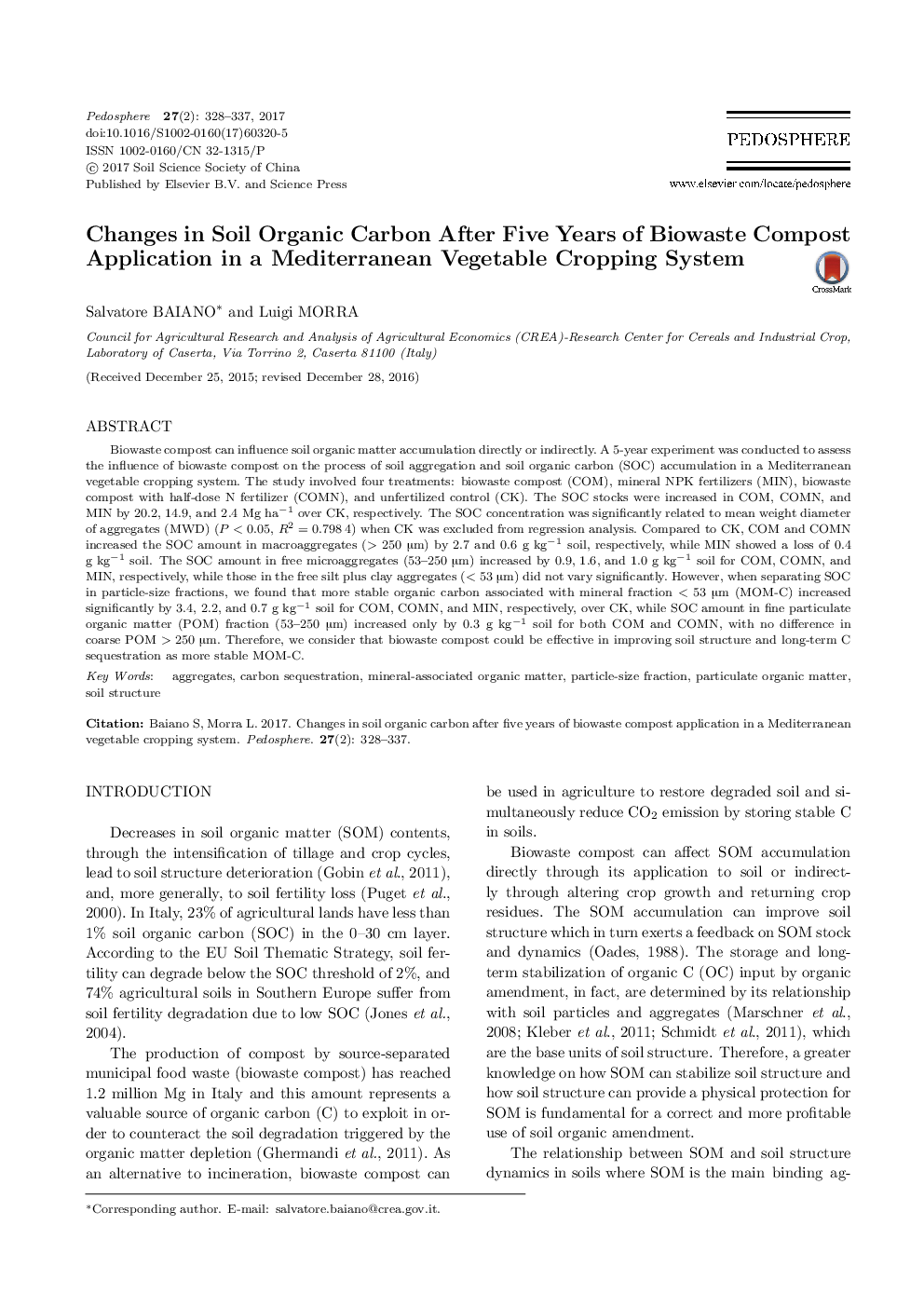| Article ID | Journal | Published Year | Pages | File Type |
|---|---|---|---|---|
| 8895517 | Pedosphere | 2017 | 10 Pages |
Abstract
Biowaste compost can influence soil organic matter accumulation directly or indirectly. A 5-year experiment was conducted to assess the influence of biowaste compost on the process of soil aggregation and soil organic carbon (SOC) accumulation in a Mediterranean vegetable cropping system. The study involved four treatments: biowaste compost (COM), mineral NPK fertilizers (MIN), biowaste compost with half-dose N fertilizer (COMN), and unfertilized control (CK). The SOC stocks were increased in COM, COMN, and MIN by 20.2, 14.9, and 2.4 Mg haâ1 over CK, respectively. The SOC concentration was significantly related to mean weight diameter of aggregates (MWD) (P < 0.05, R2 = 0.798 4) when CK was excluded from regression analysis. Compared to CK, COM and COMN increased the SOC amount in macroaggregates (> 250 μm) by 2.7 and 0.6 g kgâ1 soil, respectively, while MIN showed a loss of 0.4 g kgâ1 soil. The SOC amount in free microaggregates (53-250 μm) increased by 0.9, 1.6, and 1.0 g kgâ1 soil for COM, COMN, and MIN, respectively, while those in the free silt plus clay aggregates (< 53 μm) did not vary significantly. However, when separating SOC in particle-size fractions, we found that more stable organic carbon associated with mineral fraction < 53 μm (MOM-C) increased significantly by 3.4, 2.2, and 0.7 g kgâ1 soil for COM, COMN, and MIN, respectively, over CK, while SOC amount in fine particulate organic matter (POM) fraction (53-250 μm) increased only by 0.3 g kgâ1 soil for both COM and COMN, with no difference in coarse POM > 250 μm. Therefore, we consider that biowaste compost could be effective in improving soil structure and long-term C sequestration as more stable MOM-C.
Keywords
Related Topics
Life Sciences
Agricultural and Biological Sciences
Soil Science
Authors
Salvatore BAIANO, Luigi MORRA,
